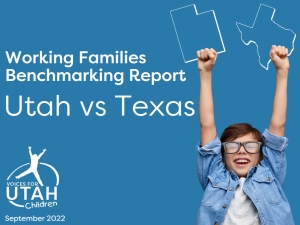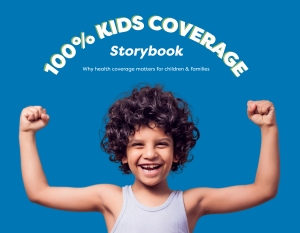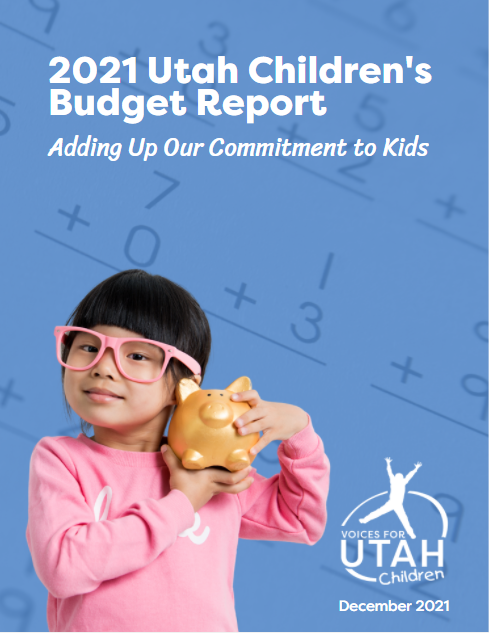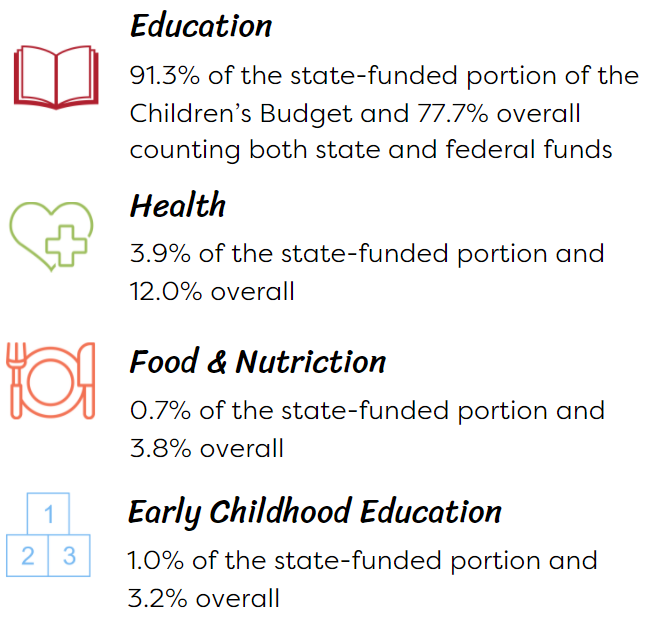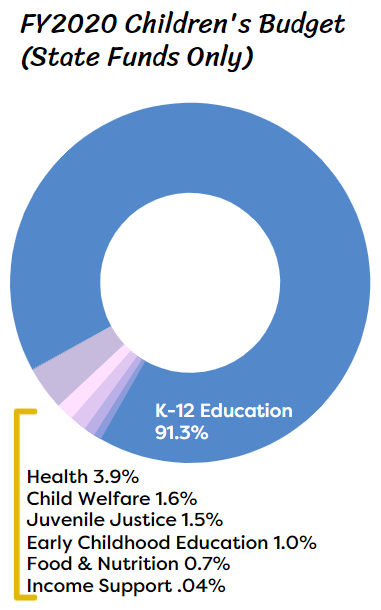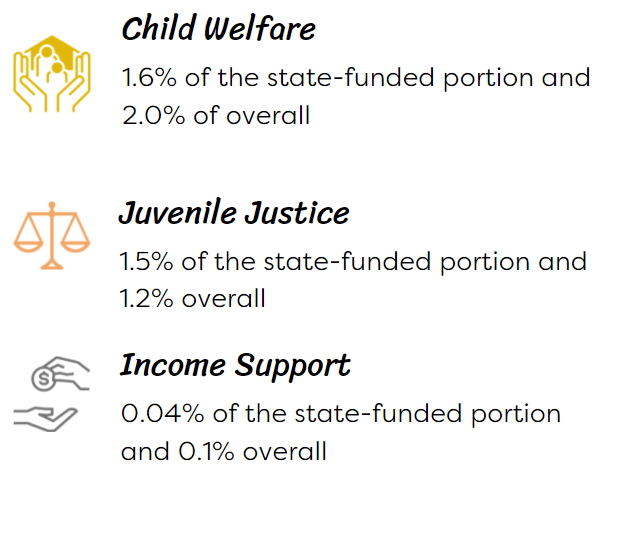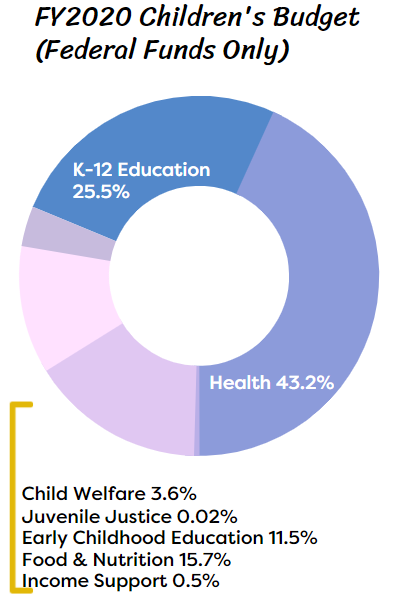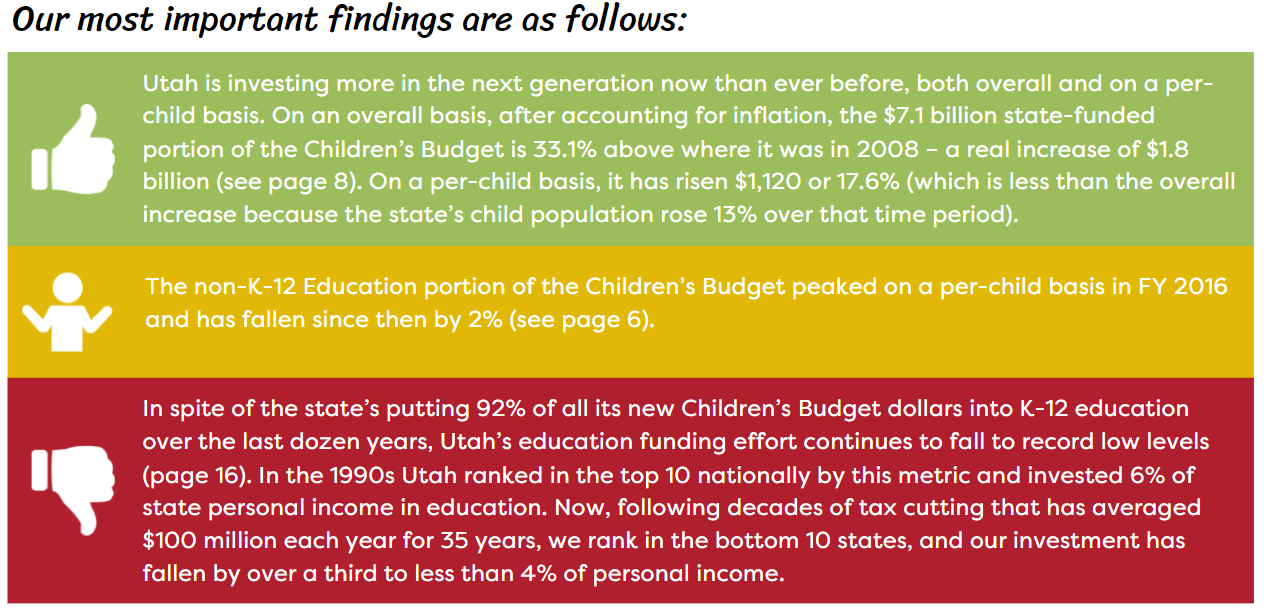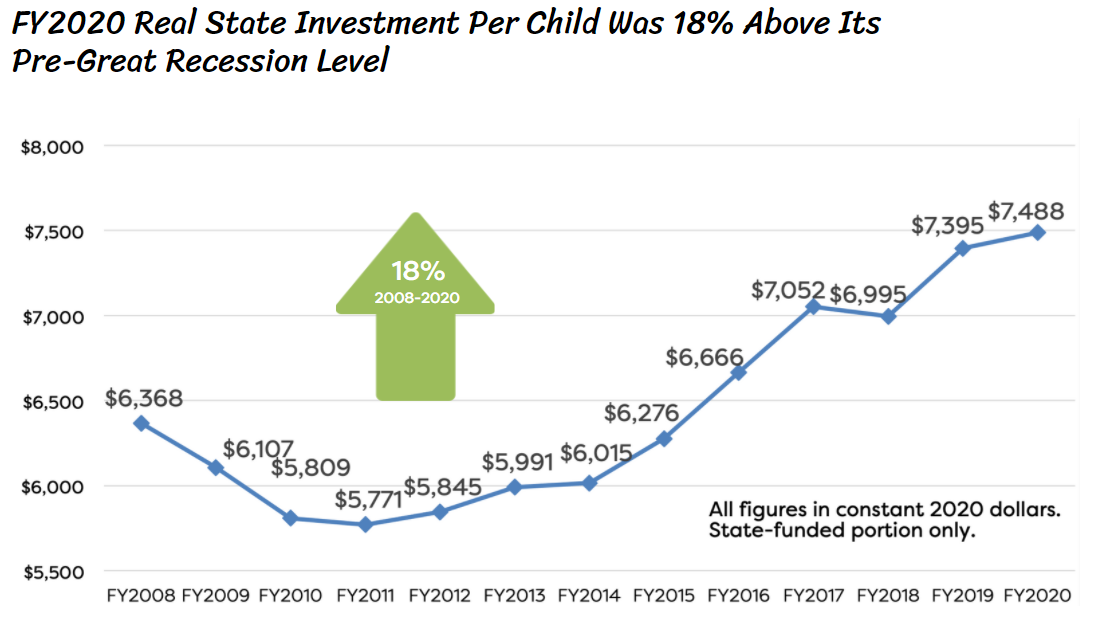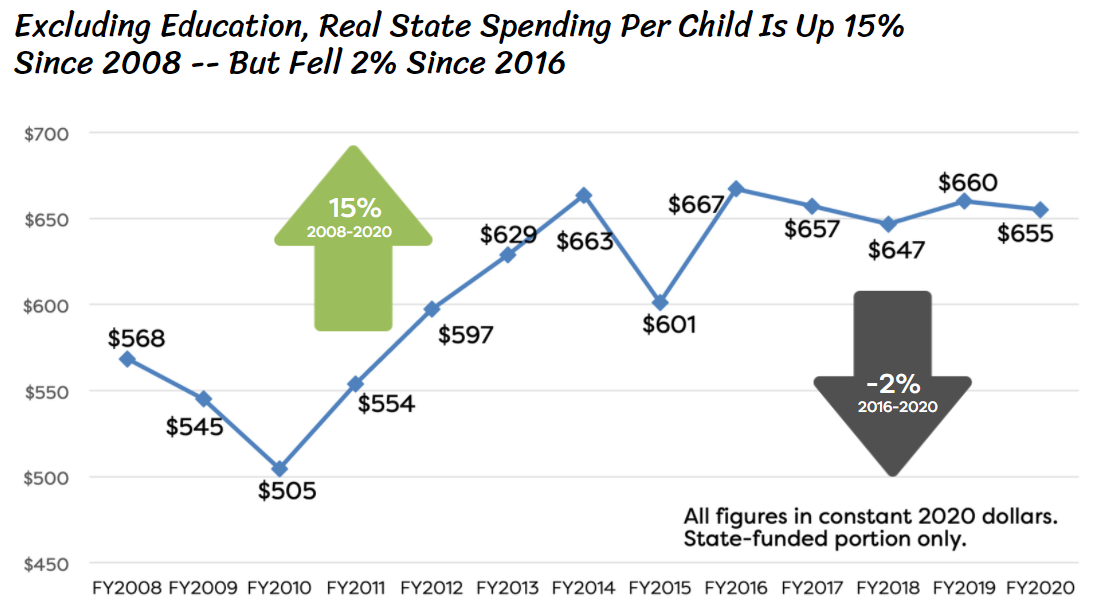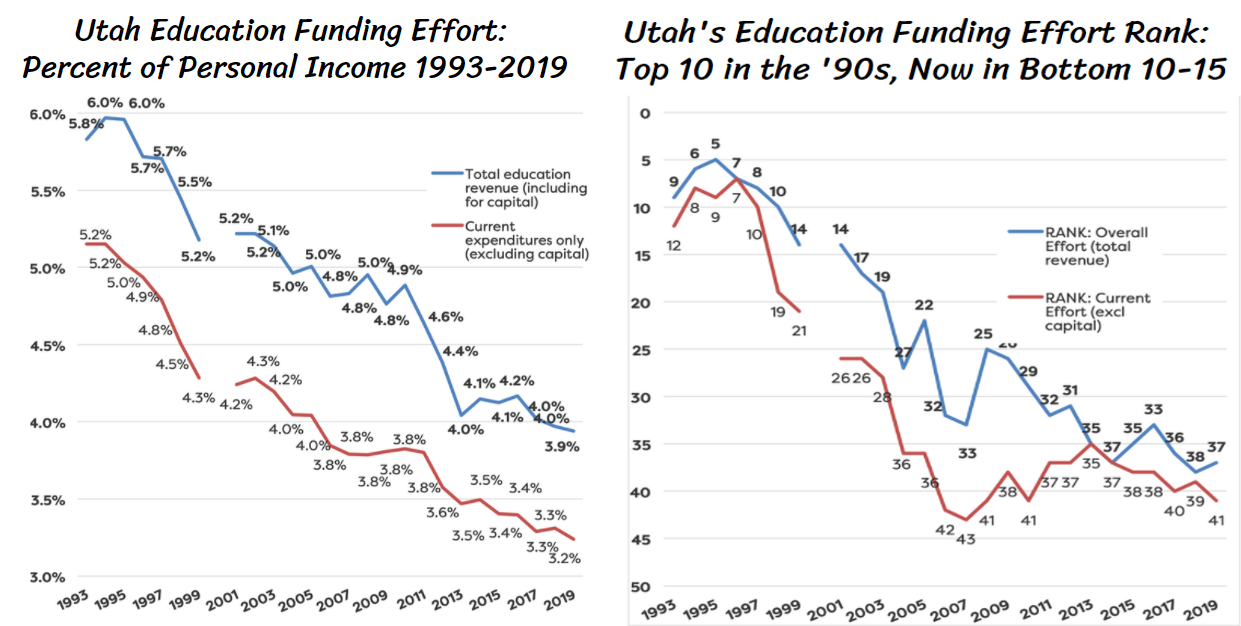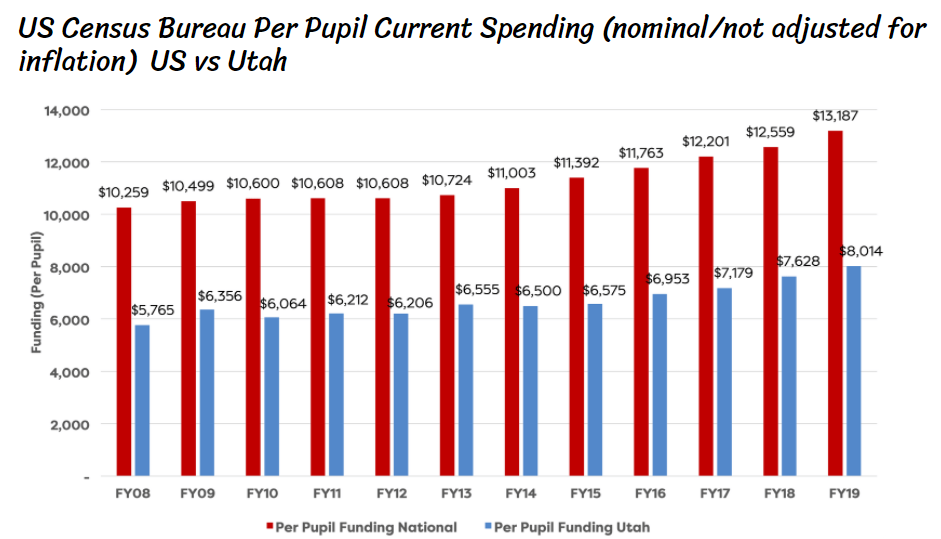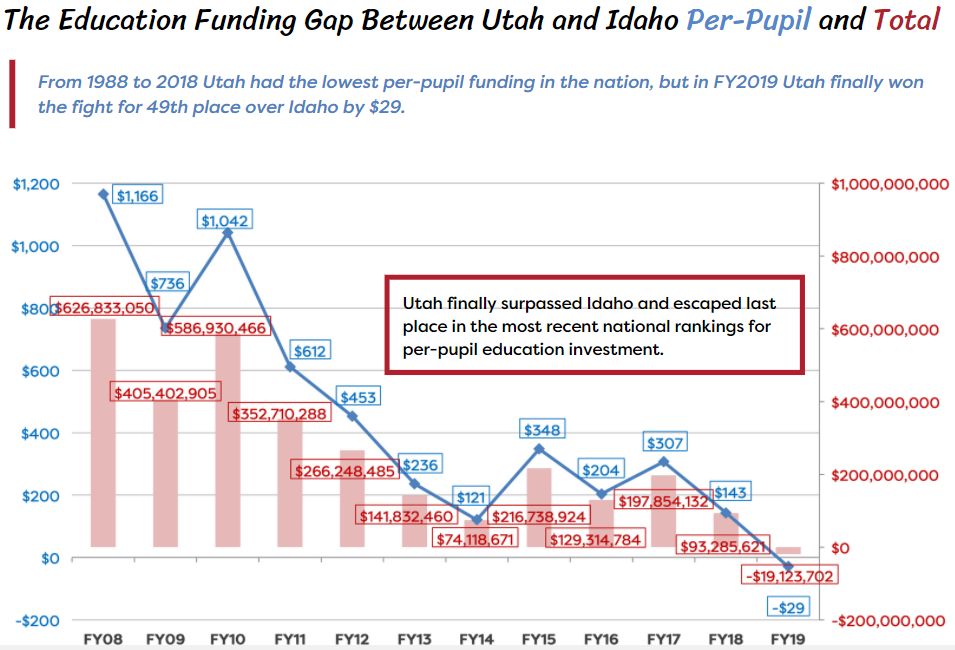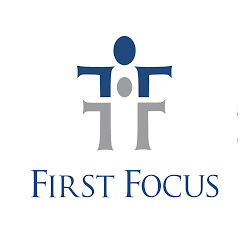Legislative Center
Medicaid
A Rough Legislative Session for Utah Kids (Again)
Our 2024 Legislative Agenda
Invest in Utah's Future Coalition: $5.6b of unmet needs should be prioritized over tax cuts
Utah Economic Benchmarking Project 2022: Utah vs Texas
New Economic Benchmarking Report Finds Utah Ahead of Texas in Most Key Metrics of Economic Opportunity and Standard of Living
Salt Lake City, August 31, 2022 - Voices for Utah Children released today the fifth in its series of economic benchmarking reports that evaluate how the Utah economy is experienced by median- and lower-income families by benchmarking Utah against another state. This year's report, authored by Taylor Throne and Matthew Weinstein with support from intern Bryce Fairbanks from the University of Utah Department of Economics, compares Utah to Texas. While the Economic Opportunity benchmarks come out nearly even, with Utah ahead in 11 and Texas ahead in 8, in the Standard of Living category Utah predominates in 20 categories and Texas in just two.
Voices for Utah Children's Economic Analyst Taylor Throne commented, "It seems clear that Texas has more to learn from Utah than vice versa. In terms of economic opportunity, Utah outperforms Texas for our labor force participation rate and our low unemployment rate (see page 13 of the report). In education, while both states are in the bottom 10 for investment, Utah claims much better 4th and 8th grade math and reading scores. At the university level, Utah invests more and enjoys stronger educational attainment levels (though our younger generation has lost the lead over the nation enjoyed by our older generations.) (See page 17.) Utah ranks 1st in the nation for our low level of income inequality, while Texas ranks 38th. We also stand out for intergenerational mobility and rank #1 for education funding fairness while Texas ranks 34th (see page 21). In the second part of the report where we measure standard of living. Utah is the clear winner in most measures. Utah enjoys much lower rates of poverty and uninsured children (though both states rank at the bottom for insuring Hispanic/Latino children) (see page 25).The most recent Kids Count overall ranking has Utah 4th and Texas 45th (see page 29). Utah also has shorter commutes, higher homeownership rates, and more volunteerism and voter participation (see page 33)."
Voices for Utah Children's State Priorities Partnership Director Matthew Weinstein commented, "The main takeaways from this report and the others in the series are that Utah's economic successes put us in a position to make the new upfront investments we need to make now -- in education, public health, poverty prevention, and closing racial/ethnic gaps -- so that we can achieve our true potential and follow in the footsteps of states like Colorado and Minnesota that have become high-wage states and achieved a higher standard of living, and do it in such a way that all our children can have a better future."
The report release presentation took place online and can be viewed at https://fb.watch/ffuSPZ09MR/. The presenters included both Taylor Throne and Matthew Weinstein as well as a special guest, Brandon Dew, President of Central Utah Labor Council.
Utah's Top Economic Advantages: Hard Work & Strong Families Allow Utah to Enjoy High Household Incomes and Low Poverty
Can Texas Learn Any Lessons from Utah?
Utah enjoys a higher real median household income than Texas, ranking #11 nationally, although past inequities have left a legacy of barriers causing significant gaps between the median wage of different racial and ethnic groups. Utah's higher incomes are due largely to our high labor force participation rates and our preponderance of two-worker (often two-parent) households.
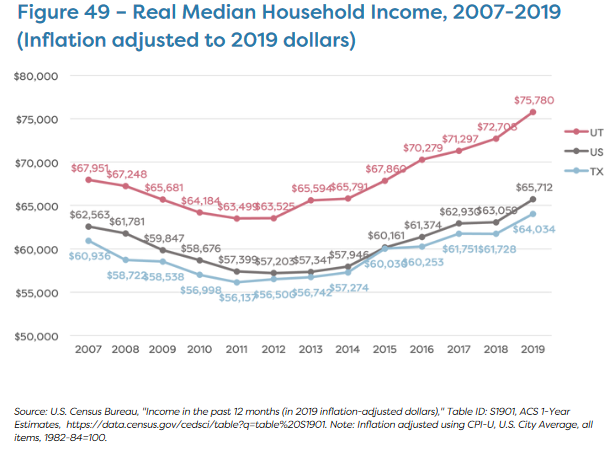
Even though Texas has a larger GDP per capita and ranks ahead of Utah for business climate, Utah has a higher share of people working and fewer people looking and unable to find work. Utah ranks 1st in the nation for income equality by the GINI Index, 1st for K-12 funding equity, and has fewer people living below the poverty line.
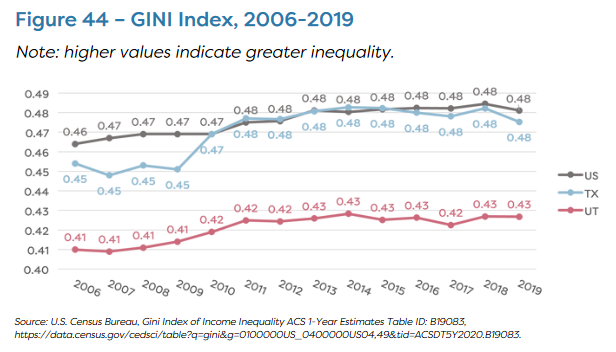
Utah is the clear winner by most standard of living measures. The most recent Kids Count overall ranking has Utah 4th and Texas 45th. Utah also has shorter commutes, higher homeownership rates, and more volunteerism and voter participation. Utah also has a much fairer tax system. Texas applies one of the highest tax rates in the nation (6th highest) to households with the lowest incomes and applies one of the lowest tax rates (9th lowest) to households with the highest income. This is because Texas has no personal or corporate income tax to offset the regressivity of their major revenue sources: sales, excise, and property taxes. As a result, Texas is one of the highest-tax states in the nation for lower-income residents, and one of the lowest-tax states for the wealthy.
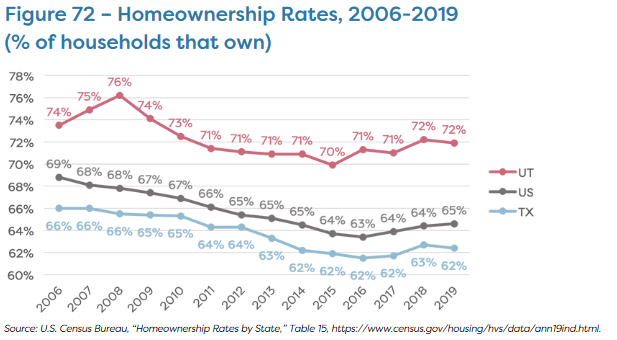
Can Utah Learn Any Lessons from Texas?
Texas leads in early childhood education for pre-k and full-day kindergarten participation. Texas also has a much smaller gender wage gap than Utah, which ranks as one of the worst states for gender equality. When disaggregated by race and ethnicity, Texas has a smaller gender wage gap than Utah for every race and ethnicity except Latino and Native Hawaiian and Pacific Islander women.
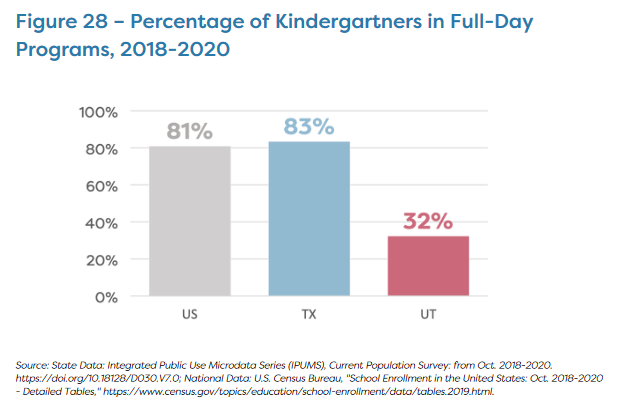
Policy Implications
Strengthening the Labor Force
Utah and Texas are both far below the national average for median (50th percentile) and 10th percentile hourly wages, likely due to the fact that both are among the 20 states that never raised their minimum wages above the 2009 federal minimum of just $7.25 (now at its lowest level since 1956), and both states are among the 27 that discourage union membership through “right-to-work” laws.
Addressing the Legacy of and Present Barriers Causing Racial & Ethnic Gaps
Racial and ethnic gaps are evident in almost every outcome where race and ethnicity are disaggregated, such as high school graduation rates, wages, gender pay gaps, poverty rates, and uninsured rates. It is important to note that these gaps were caused by social, economic, and political structures and policies that have perpetuated racial inequality, elaborated in our report. Such policies have had very serious consequences for people of color, especially children of color. And as in the rest of the nation, the COVID-19 pandemic has exacerbated these hardships. Addressing these gaps through investments in early childhood and K-12 education, specifically where there is a high concentration of children of color (which includes many communities along the Wasatch Front, including Ogden, Salt Lake City, South Salt Lake, West Valley City, Midvale, and Provo) would likely increase educational attainment, wages, and standard of living overall and would therefore contribute to reducing racial and ethnic gaps in the future.
Restoring Education Funding Effort
The link between education and income is well-established. States with higher education levels generally have higher levels of worker productivity, wages, and incomes. Voices for Utah Children has demonstrated elsewhere that Utah’s education funding effort has fallen from top 10 in the nation in the 1990s to the bottom 10 states today. While Utah “does more with less” in education compared to other states, will we be able to continue to advance without addressing the underfunding in our public education system? Utah has racial/ethnic educational outcome gaps which are larger than the national average, our pupil-to-teacher ratio is 3rd worst in the nation at 23:1 vs the national average of 16:1, and teacher pay has also fallen by 2% over the past 50 years, while teacher salaries nationally have increased 7%.
At the college level, Utah historically was always ahead of the national average for attainment of bachelor’s degrees and above. But Census data show Utah’s lead shrinking relative to the nation with each successive generation, to the point now that Utah millennials (ages 25-34) have fallen behind their peers nationally, despite relatively generous state support and low tuition levels. In addition, for young adults who do not seek to complete a college degree, apprenticeships and other skilled training programs or ensuring state contracts pay the prevailing local wage are two policies that have proven their value for achieving higher wages.
Can Utah Become a High-Wage State?
Utah has gone from being a low-wage state a generation ago to middle-wage status today, a considerable accomplishment. One question Utah leaders may now wish to consider is, is that good enough? Should we declare, “Mission Accomplished”? Or is Utah in a position, like Colorado and Minnesota before us, to become, over time, a high-wage state and set our sights on taking the necessary steps today to achieve that goal over the years and decades to come?
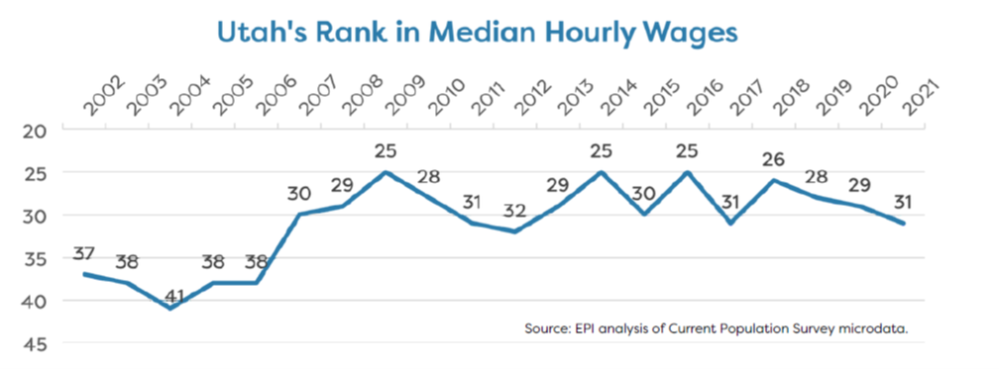
Similarly, how do we include those earning the lowest wages in the gains Utah has made and will potentially make in the future? Utah is not even a half percentage point lower than the national share of workers earning poverty-level wages and lags behind the nation’s 10th percentile wage, ranking 33rd. Even as the state with the lowest income inequality ranking in the nation, Utah suffers from a tremendous gap between low-income workers and the rest of the income scale.
The main lesson that emerges from the Working Families Benchmarking Project reports comparing Utah to Colorado, Minnesota, Idaho, Arizona and now Texas is the following: Higher levels of educational attainment translate into higher hourly wages, higher family incomes, and an overall higher standard of living. The challenge for policymakers is to determine the right combination of public investments in education, infrastructure, public health, and other critical needs that will enable Utah to continue our progress and achieve not just steady growth in the quantity of jobs, but also a rising standard of living that includes moderate- and lower-income working families from all of Utah’s increasingly diverse communities.
The 41-page report is available for download here.
MEDIA COVERAGE OF THE BENCHMARKING PROJECT:
The Spectrum: https://www.thespectrum.com/story/news/2022/09/02/report-compares-utah-texas-economy-standard-living-homes-jobs/7970912001/
KSL News Radio: https://kslnewsradio.com/1974565/new-report-ranks-utah-above-texas-in-aspects-of-economic-opportunity-and-standard-of-living/
Salt Lake Tribune: https://www.sltrib.com/opinion/commentary/2022/09/15/matthew-weinstein-taylor-throne/
100% Kids Coverage Storybook
Families living with health insurance, and without: New storybook highlights why all Utah children need health insurance
Throughout the pandemic, health insurance has been a critical lifeline for Utah families to stay healthy and avoid medical debt. Yet many Utah children and parents are still unable to access any form of health insurance; they are denied coverage due to their immigration status. A new digital storybook, released by Voices for Utah Children, highlights families’ real-life experiences with health insurance and medical care. The stories reveal how having health insurance- or not having it- can alter a child’s life course.
The digital book is a collection of accounts shared by children, parents and caregivers across Utah. To protect the privacy and sensitive material shared, names were changed. The book includes accounts of children growing up without health insurance; the short and long-term positive impact of CHIP and Medicaid for children; immigrants and asylees finding the care they need; and children being denied care due to immigration status, while their siblings born in the United States can access care.
The storybook humanizes a problem that is often ignored: today in Utah, thousands of Utah children are still shut out of health coverage. As one DACA- recipient recounts in the book, growing up her families was “Too scared of the cost to go to the ER.”
However, there are glimpses of hope on the horizon. In the 2022 General Session, the Utah Legislature considered a bill that would allow all income-eligible children to enroll in Medicaid or CHIP, regardless of their background or immigration status. The bill, sponsored by Senator Luz Escamilla and Representative Mike Schultz, passed the Senate with broad support, but ran out of time in the House.
The book lifts up the stories behind the 2022 legislation. Previous reports from Voices for Utah Children have estimated the significant state savings if all children have coverage. The digital storybook shows the emotional, physical and financial costs families pay when their children are denied health insurance, and the life-changing benefits when families are able to get coverage.
What happened to Coverage for All Kids this Session?
This Session, one of Voices for Utah Children’s top priority bills received very little public attention despite its behind-the-scenes activity. Below we will unpack what happened, lessons we learned, and what we believe the path forward should be so we can reach 100% Kids Coverage in Utah.
First a little background, during the 2021 Legislative Session, we were thrilled to see many statements in support of children’s health insurance coverage. Speaker Wilson highlighted children’s coverage and Utah’s high rate of uninsured kids during his opening Session remarks and supported funding for CHIP outreach. On the Senate side, Senator Escamilla championed a bill to Cover All Kids, which former House Leader, Representative Gibson, sponsored on the House side. While the bill did not make it through in the final days of the Session, it seemed well-positioned to pass in 2022.
Onto 2022…
This year Senator Luz Escamilla ran Senate Bill 185. Like her bill last year, SB 185 ensured all Utah children could get covered and stay covered by allowing income -eligible Utah children access to Medicaid and CHIP, regardless of immigration status. In addition, SB 185 restored funding for continuous eligibility for Medicaid children. Senator Escamilla skillfully navigated SB 185, with approval from the Senate Revenue and Taxation Committee and broad support on the Senate floor. On the House side, Majority Leader, Representative Mike Schultz, stepped up as the House Sponsor to usher the bill across the finish line. But unfortunately, the bill was never brought to the full floor for a vote in the House.
So what happened this year?
Although SB 185 made it out of the Senate with little objections or pushback, it ran into obstacles in the House. The bill arrived in the House without enough time for a committee hearing. While it could have gone through without one, members of the House did not have the full time to discuss and familiarize themselves with the bill and work through question or concerns. Although the bill never came to the floor for a full vote, it did have strong bipartisan support. Cover All Kids got even closer this year, but still fell short.
Going forward, we must discuss any questions or concerns directly. We invite lawmakers to join us in having honest conversations about the children we are leaving behind in our state, the children we are deciding not to cover. All children growing up in Utah need health insurance to thrive, regardless of their immigration status. To deny some children access to health care is unconscionable.
It is time we amplify the many voices, the stories, the statewide energy and support for Covering All Kids. Lawmakers are ready; Utahns are ready. It’s time we act to Cover All Kids.
Learn more about the stories and join our campaign at https://www.100percentkids.health/take-action
Utah Children's Budget Report 2021
Children’s Budget Report Finds Utah Is Spending More On Children Than Ever Before, But Education Funding Effort Is At A Record Low
Salt Lake City, December 9, 2021 - Voices for Utah Children, the state’s leading children’s policy advocacy organization, released its biennial Children's Budget Report. The report, published every other year, measures how much (before and after inflation) the state invests every year in Utah’s children by dividing all state programs concerning children (which add up to about half of the overall state budget) into seven categories, without regard to their location within the structure of state government. The seven categories are as follows, in descending order by dollar value (adding state and federal funds together):
Public investment in children should be understood as a central component of Utah’s economic development strategy. Examining how much Utah invests in children can help the state evaluate whether it is maximizing the potential of our future workforce through our investment in human capital.
This is especially important given the rapid demographic changes taking place in our state. The 2020 Census found that 30% of Utahns under 18 are members of a racial or ethnic minority (almost one-third of our future workforce), compared to just 24% in 2010. The investments we make today in reducing racial and ethnic gaps among Utah’s children will enable the state to thrive and prosper for generations to come

Report highlights are as follows
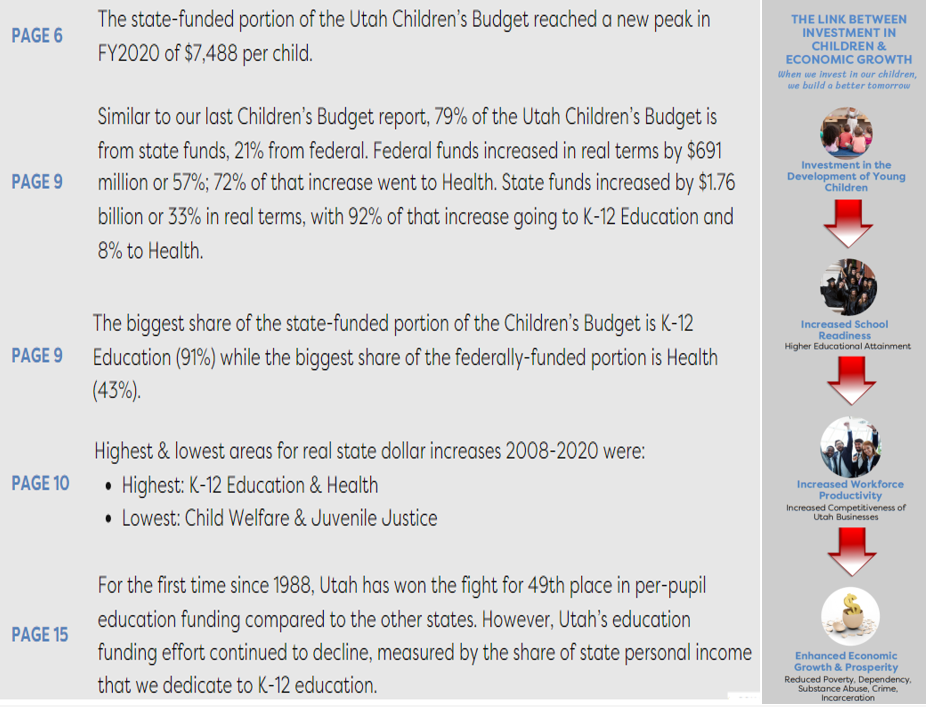
Good News: Utah is investing more in the next generation now than ever before, both overall and on a per-child basis
Not-so-good News: The non-K-12 Education portion of the Children’s Budget peaked on a per-child basis in FY 2016 and has fallen since then by 2%
Bad News: Utah’s education funding effort continues to fall to record low levels
Additional Trends: Changes in Funding by Source
Trends in Education Funding: UT beat ID for 49th place, still far behind US overall
MEDIA COVERAGE OF THE CHILDREN'S BUDGET REPORT:
Facebook Live Event presenting the 2021 Children's Budget Report, major findings and summaries of all the categories of funding that impact children in Utah. https://fb.watch/9O05ECPAHi/

